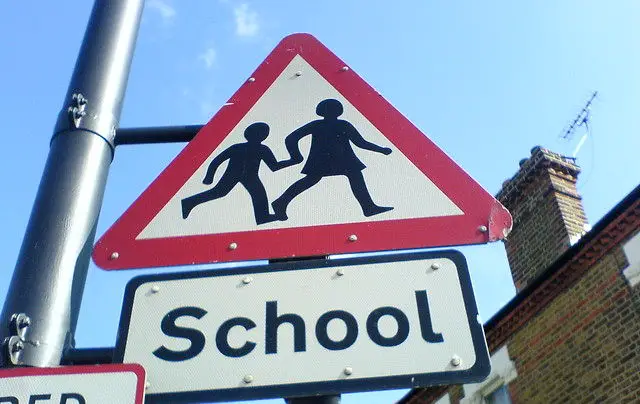We always welcome a Letter to the Editor to share with our readers – unsurprisingly they don’t always reflect the views of this publication. If you have something you’d like to share, get in touch and of course, your considered comments are welcome below.
This from Peter Shreeve, Assistant District Secretary Isle of Wight for the National Education Union. Ed
I write to comment on the article titled, “End of school day ‘potentially dangerous’ says head of Isle of Wight primary school” (18.9.19).
Ask any Carisbrooke local – and I am one – and they will probably say they avoid that part of town at certain times of the day.
Many problems occur
Anyone who observes the end of the day departure of any school with a substantial student number cannot fail to be concerned and sometimes alarmed as students exit.
- They often exit with speed, fixated on their smartphones, often unaware of other students or the pedestrian public or others in their cars. Often a danger to others and themselves.
- The narrow lanes away from the road can be a hazard through sheer weight of numbers. Throw other adults, mothers and pushchairs into the mix. Add in those dogwalkers and occasionally a bicycle or mobility scooter, who have badly timed their excursion and the paths are challenging. When the hedges, trees and blackberries have not been trimmed, then the challenge grows.
Has been challenging for some time
At certain times of the day, Wellington Road and the surrounding area can be a nightmare at the end of a school day and has been challenging for some time with:
- double decker buses parked on pavements even as far as the junction of Carisbrooke High St and Carisbrooke Rd, making it unable to use the footpath, creating a line of traffic, which cannot pass and generally creating more challenge along even more roads.
- an often-seen traffic warden moving presumably parents’ cars on to allow buses to park.
However, there is a similar reality at other schools. Although there are fewer issues because of the size of the number of students involved.
But what has ultimately led to this heavy traffic?
Shortening of the school day
It was the shortening of the school day at one school – something that many schools have done over the last couple years, simply to save money.
Austerity! A lack of money to finance the service schools provide. There are 12 Island maintained schools in deficit and a number on the brink. This figure doesn’t include the non-maintained schools, so the figure is certainly higher. How do they save money?
The lunch break is shortened, fewer staff are needed to supervise. Money is saved on wages and the day can finish earlier, but this has many consequences as reported by OnTheWight in May.
20 minute lunch break
Indeed, in recent years, one Island school even cut the lunch break to 20 minutes (the statutory minimum), but quickly found there was insufficient time to go to the loo, eat lunch and socialise – not to mention detentions? They also discovered: shorten the breaks and behaviour worsens. The school reverted back to 35 minutes after a term.
Prior to 2011 schools would more widely consult on any changes and the process was more bureaucratic.
Shortening the school day is done to save money
Now they have no need. Shortening the school day is an option, but let’s be clear – it is done to save money! We need to be aware that schools have limited resources and to some extent are forced into making unpalatable decisions.
It’s time we all acknowledged funding issues and were prepared to have a greater influence on our local and national politicians.





